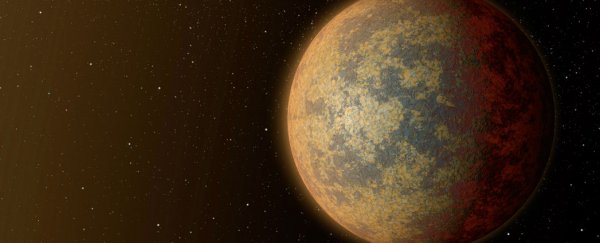Astronomers using the Spitzer Space telescope have identified the closest rocky planet outside our Solar System to date. Named HD 219134b, the planet is located 21 light-years away, which is relatively close, when you consider that the Earth-like planet recently discovered by NASA and its planet-stalking telescope Kepler is a distant 1,400 light-years away.
"Most of the known planets are hundreds of light-years away. This one is practically a next-door neighbour," one of the team, Lars A. Buchhave from the Harvard-Smithsonian Centre for Astrophysics, said in a press release.
HD 219134b is 1.6 times the size of Earth, holds four times its mass, and has a three-day orbit around its host star. While the planet itself can't be seen, even through a telescope, its star is so bright, it's visible to the naked eye if you look in the vicinity of the North Star in the Cassiopeia constellation.
Unfortunately, even if we could figure out how to travel the 21 light-years to get to HD 219134b, we won't be colonising it any time soon. And when I say "any time soon", I mean never. According to Sean O'Kane at The Verge, the planet is so close to its host star that liquid water could never form, even though the surface temperature is actually colder than it is here on Earth.
But that doesn't mean the discovery won't be extremely valuable for astronomers. Not only is HD 219134b the closest rocky planet outside our Solar System, it also happens to be the closest exoplanet known to be transiting - or crossing in front of - its star. And that makes it a "potential gold mine of science data".
"Transiting exoplanets are worth their weight in gold because they can be extensively characterised," said Michael Werner, the project scientist for the Spitzer mission at NASA's Jet Propulsion Laboratory (JPL). "This exoplanet will be one of the most studied for decades to come."
If only it had a more charismatic name. HD 219134b is pretty and all, but I think from now on I'll just think of it as Bob.
